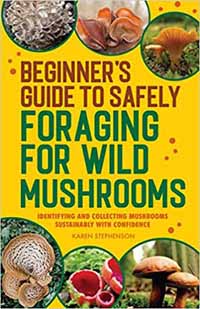

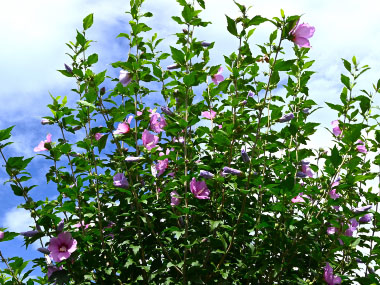
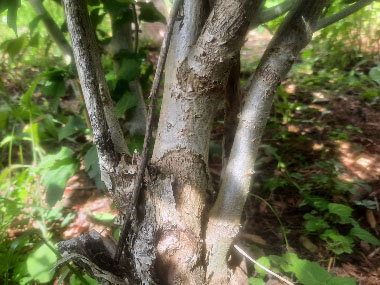
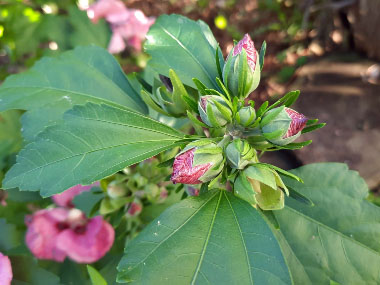
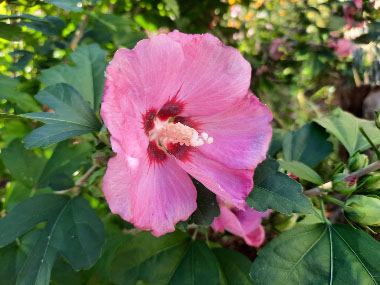
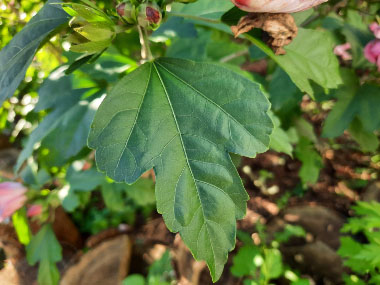
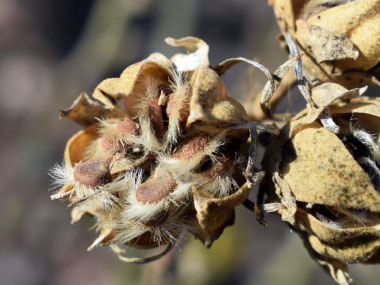
To support our efforts please browse our store (books with medicinal info, etc.).
Rose of Sharon is a landscape shrub (or small tree) native to Asia but very commonly planted in the US and Canada. It is a cold hardy tree or shrub with large tropical looking flowers, unmistakable once you’ve seen them. The trumpet-shaped flowers can be in shades of white, pink, purple, or red. They have unique leaves that are grow alternate; and each leaf is roughly ovate or diamond-shaped, It can be considered a small tree or upright shrub with a pyramidal crown. Rose of Sharon is the national flower of Korea. It is symbolic in its abundance and is a prominent feature of Korean culture. This shrub has played an important role in Korea, not only as an ornamental plant but also as an essential ingredient in folk remedies. It is in the mallow (Malvaceae) family.
Trunk/Bark
The bark is fairly smooth with brown and gray striping.
Branches/Twigs
Branches and twigs are light gray to brown, sometimes brown. There are raised leaf scars and hairy stipules may be present.
Height
Grows to 3 metres (10') tall with a pyramidal crown.
Leaves/Needles
Leaves are distinctive. They are lobed (often with three lobes) or diamond-shaped, coarsely serrated, and have a palmately veined pattern,
Flowers
Rose of Sharon flowers measure about 5 to 10cm (2 to 4" across), showy, and are trumpet-shaped. They are often white, pink, purple, or red. Each flower has a distinctive, elongated stamen tube in the center of each flower and can be either single or double-petaled .
Fruit
Fruit is ovate, pointed, brown, with a dry capsule. It measures 2cm (3/4") long and wide and ripens in late summer and fall.
Habitat
This shrub thrives in full sun and well-draining soil. Its native habitat is eastern Asia, specifically China and Taiwan, but it has been widely introduced and naturalized in temperate regions worldwide. It is also a popular garden shrub which is low-maintenance. It can be drought and heat-tolerant as it matures, easily adapting to poor soil and urban conditions.
Edible Parts
The edible leaves can be enjoyed in the spring, summer and fall. They taste somewhat like lettuce but have a mucilaginous texture. Flowers are edible. They add beauty to any salad and the taste is mild, with a hint of nectar at the base of the petals. Unopened flower buds make a great alternative vegetable (makes a great okra substitute). The mucilaginous texture is a great thickening agent for soups, and sauces. If desired, make a tea from the leaves and flowers.
Other Name
Rose Mallow.
Recipes
Winter Survival Food Handbook

PDF Plant Magazines
Types of Wild Food
Geographic Zones Seasons
Disclaimer
EdibleWildFood.com is informational in nature. While we strive to be 100% accurate, it is solely up to the reader to ensure proper plant identification. Some wild plants are poisonous or can have serious adverse health effects.
We are not health professionals, medical doctors, nor are we nutritionists. It is up to the reader to verify nutritional information and health benefits with qualified professionals for all edible plants listed in this web site. Please click here for more information.
Why Edible Wild Food?
- Food costs are rising
- Free, wild food is readily abundant
- Wild food adds nutrition to your diet
- Wild food can help treat various medical conditions





